Management of pests, diseases and other nuisances
Common insect pests
a. Wax moth
In tropical areas, wax moths can be a serious problem mainly in stored combs mainly. Therefore, to prevent moth attacks, instead of storing the combs they should be melted and stored as wax block. In case combs are stored, they must be inspected regularly during warm weather. Mainly old, hatched combs with pollen are preferred by the moths. In the hive strong bee colonies are able to control the moths.
In case of moth damage, the infested parts should be cut out and the larvae destroyed. If there is a severe infestation, all the wax should be scraped off the frames and burnt. The frames should then be scotched with a blow torch or soaked in hot water containing washing soda or a household detergent. The hive body should also be cleaned up and scotched. Both the larva and adult moth feed on brown combs in weak colonies which do not occupy all the frames and top-bars.
There are also different substances (e.g. Acetic acid or sulphur) that can be used to control wax moths, however, use of these materials depends on availability.
An 80 % solution of acetic acid can be used to control wax moths in stored frames or top-bars. Fumigation with acetic acid will kill adult moths, their eggs and larvae. After the honey is extracted, boxes of frames and top-bars should be piled in stacks, no more than five high. The spaces between the boxes should be taped with paste paper to form an airtight seal. Cotton wool 15 cm by 15 cm or any similar absorbent material soaked in 80 % acid is placed on top of the uppermost frames in the stack before the lid is sealed, using 25 ml 80 % acetic acid per box in the stack. The top of the stack is covered with a hive roof and the stack is left undisturbed for two weeks. The fumigation can be repeated at intervals of 2–3 weeks. Acetic acid must be handled with caution so that it does not come into contact with your skin or eyes. Acetic acid that comes into contact with skin and eyes should be washed off immediately. After fumigation, the boxes of frames and top-bars should be exposed to air for about 2 days before they are used.
Sharing information on pests and diseases in beekeeping
Ask the farmers, which pests and diseases they know or they have observed in local beekeeping. What impact do they have on the bee colonies and honey harvest? How are the pests and diseases commonly managed? Which are the advantages and inconveniences of the prevailing practices? Build awareness on the relevance of proper pest and disease management in beekeeping.
b. Varroa mite
The mites attack both the brood and adult bees and feed on the body fluids of the bees and transmit viral and bacterial diseases causing them to become weaker and weaker. It is a devastating pest and can wipe out a colony if not managed well. Bees infested by the Varroa mite have deformed wings or pinhead reddish brown spots. There are patches of dead capped brood, which is sometimes chewed open.
If Varroa mites are suspected, the following actions are recommended:
- Varroa mites show 8 to 10 times more preference for drone than for worker brood. Therefore, remove the drone brood in the hive at the beginning of the season (at least one per month during the first three months of developing the bee colony).
- In migratory beekeeping or in strong colonies the effect of Varroa mites might be reduced.
- In case of severe infestation of a strong colony with varroa, the colony should be divided using the nucleus queen method. Continuous division of the colony reduces the effect of varroa.
- Essential oils (thymol) and organic acids (§lactic acid, oxalic acid, and formic acid) are also compounds found in nature, and some are used in treating honey bees infested with tracheal mites and varroa. However, use of these materials will depend on their availability.
c. Ants and termites
Ants consume the honey and drag the brood out of the hives. Especially ‘safari ants’ can be extremely destructive to bees. Some ants only attack at night and can wipe out a colony.
To control the ants the following actions are recommended:
- Regularly clear all vegetation and weeds under the hive stand.
- Spray the apiary floor with a concoction of ground tephrosia leaves, chillies or marigolds.
- Dust the floors of the apiary with diatomite. Avoid dusting the above ground and hives as the diatomite has potential to harm the bees.
- Destroy the ant nests in the apiary.
- Hang the hives with wire at least 1 to 2 meters above ground.
- You may oil the points where the hanging poles for the hives are fixed in the ground.
Common diseases of bees
a. European foul brood
European foul brood is a disease caused by bacteria causing death of larvae, decay and stench in the hive. The disease commonly occurs in the rainy season and most colonies recover by the end of the rainy season. European foul brood can be managed by removing all affected combs and by isolating the queen in a queen cage in the hive for up to 10 days to allow workers to clean the hive and release her afterwards.
b. American foul brood
American foul brood is caused by spore-forming bacteria and infects larvae that is about 3 days old or less, causing them to die. The dead larvae decays and produces a glue-like smell. American foul brood can be managed by burning the colony, combs and frames, disinfection of beehives and by restricting supplementation by using honey and by not exchanging frames, bars and hives from other apiaries.
c. Sac brood
This is a viral disease similar in many respects to European foul brood, but it does not produce a foul smell. The larvae die in the early stages leaving a watery sac at the bottom of the cells which turns into leather-like scales. The sac brood can be managed in a similar way as the European foul brood.
Nuisances in beekeeping
a. Game and domestic animals may disturb the bees. Domestic animals, in particular, may suffer considerable bodily harm from bee stings when they tamper with the hives. This can be prevented by carefully selecting a suitable location for the apiary away from the animal and by fencing it off.
b. Bush fires are a serious problem in beekeeping as they destroy the forage plants and deprive bees of nectar and pollen causing them to swarm and abscond. Fires also have potential to destroy the hives and bees. This is especially serious with migratory beekeeping in natural forests where the beekeepers do not have absolute control on management of the forest estates. Bush fires can be prevented by stopping the burning of bushes during the dry season, and by making 3 meter wide fire breaks around apiaries, which prevent the spread of fire.
c. Chemical poisoning is a serious threat to beekeeping directly causing death of the bees and resentment by consumers concerned about bee products coming from a poisoned environment. Chemical poisoning comes from industrial fumes and agrochemicals used to kill pests and weeds in conventional agriculture. Chemical poisoning can be prevented by carrying out the following actions:
- Use of natural and organic remedies to manage crop pests and diseases.
- Location of the beekeeping activities on the windward as opposed to leeward side in respect of potential sources of chemical poisoning.
- Location of the beekeeping activities at least 3 km from potential sources of chemical poisoning.
- Dialogue with farmers in the area about developing joint strategies to avoid poisoning of bees.
d. Honey badger is an animal that can break into hives to eat honey and brood. You can prevent the attacks of badgers by carrying out the following actions:
- Hang the hives with wire about 2 meters above ground.
- Tie the lids securely on the hives with wire.
- Alternatively you can place hives in a bee house.
e. Robbing of other hives happens during dry periods when bees are looking for honey and sugar. If the invaded colony is weak, it will either be killed in fight for defense of the hive or abscond after a while. You can avoid robbing by carrying out the following actions:
- Always feed the bees inside the hives and avoid spillage of honey or sugar solution outside the hives.
- Allow only one miniaturized flight entrance in weak colonies and close any gaps of the hive.
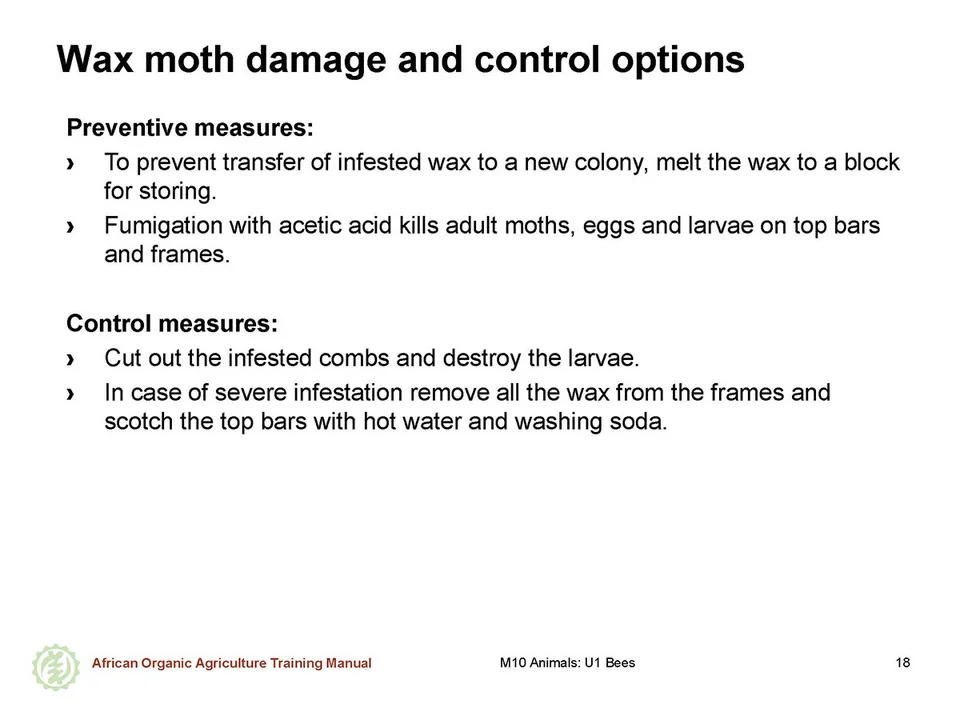
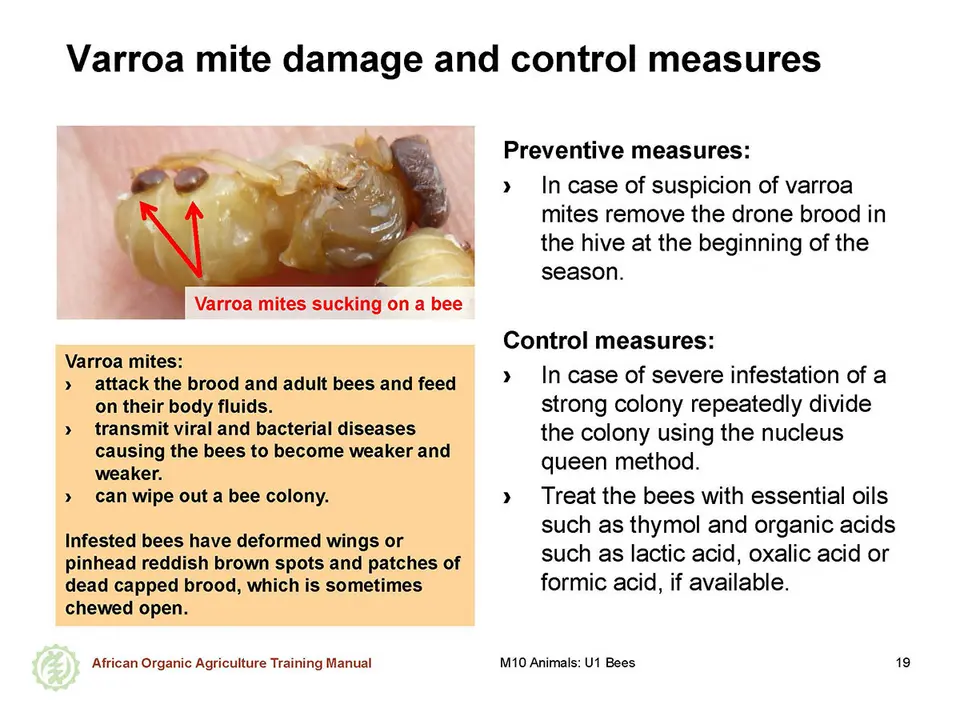
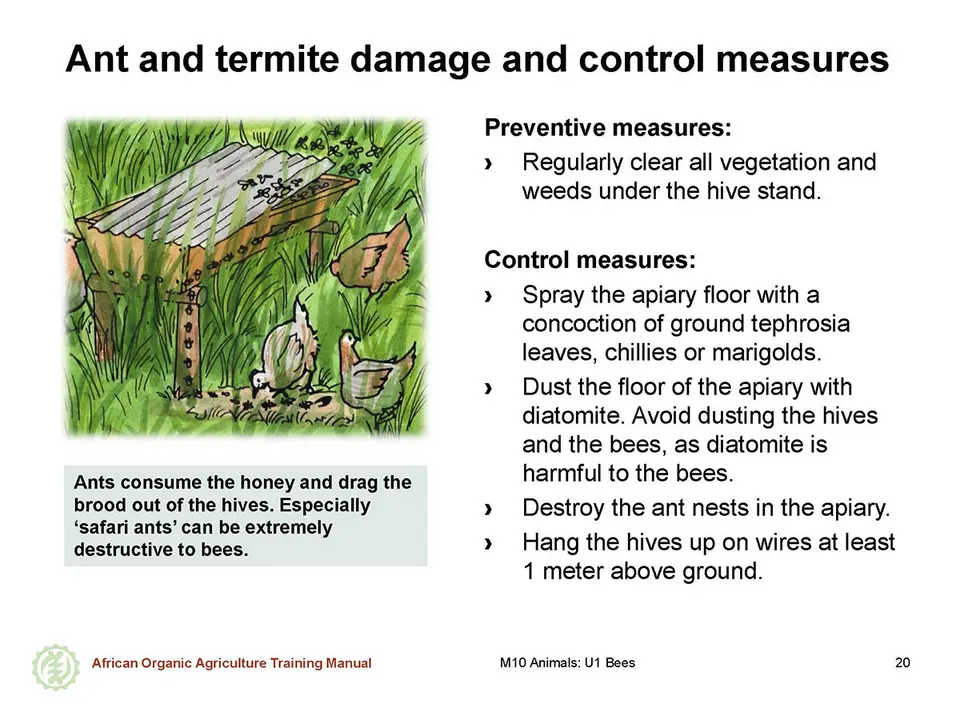
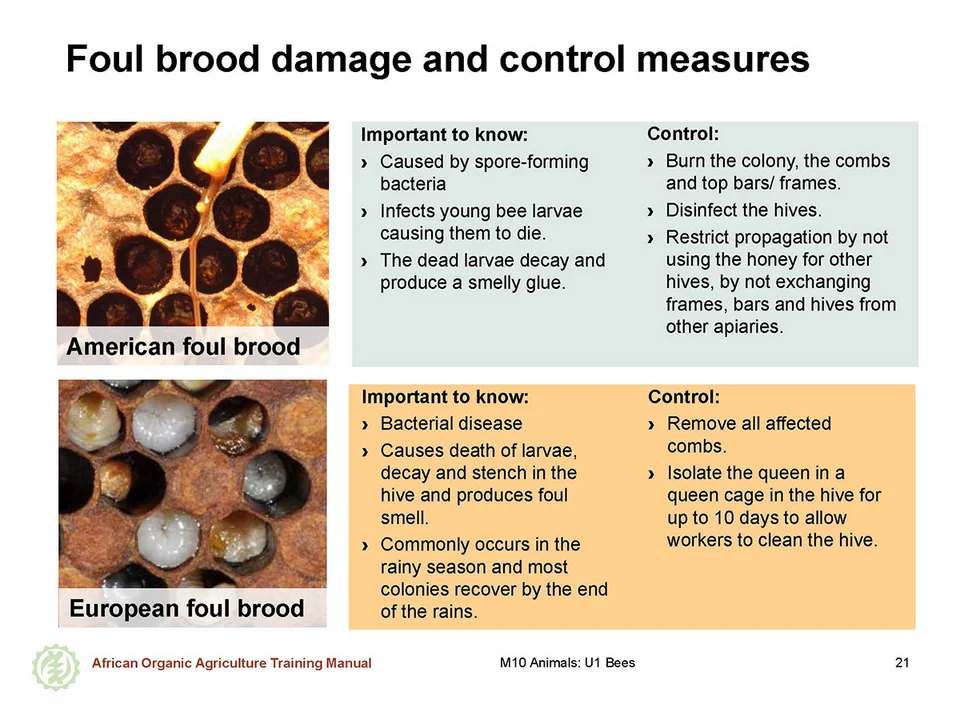
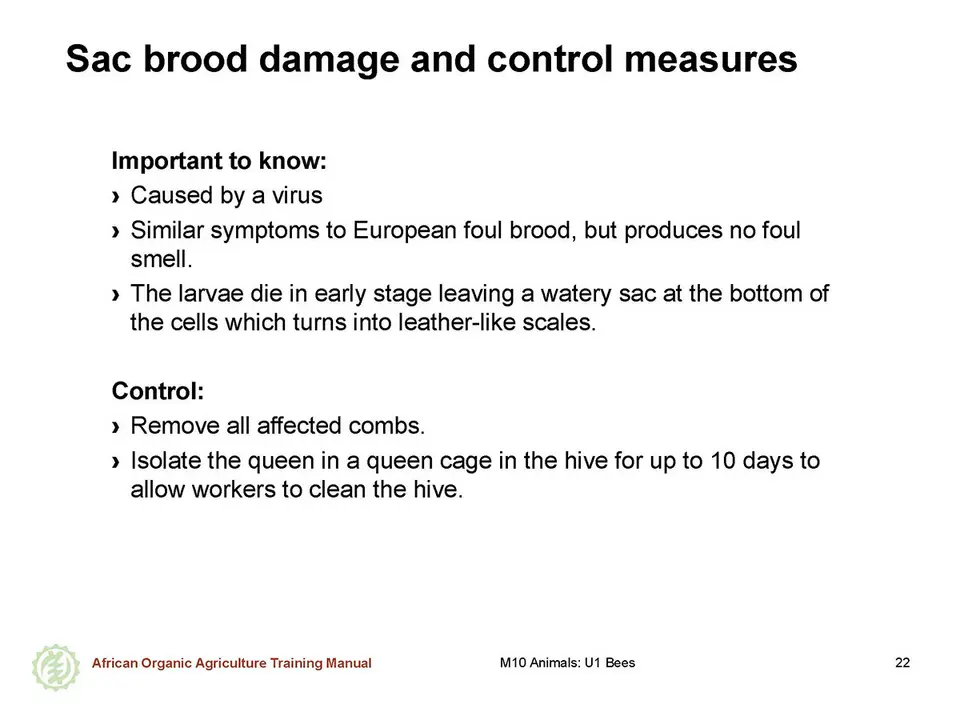
 tap and then scroll down to the Add to Home Screen command.
tap and then scroll down to the Add to Home Screen command.